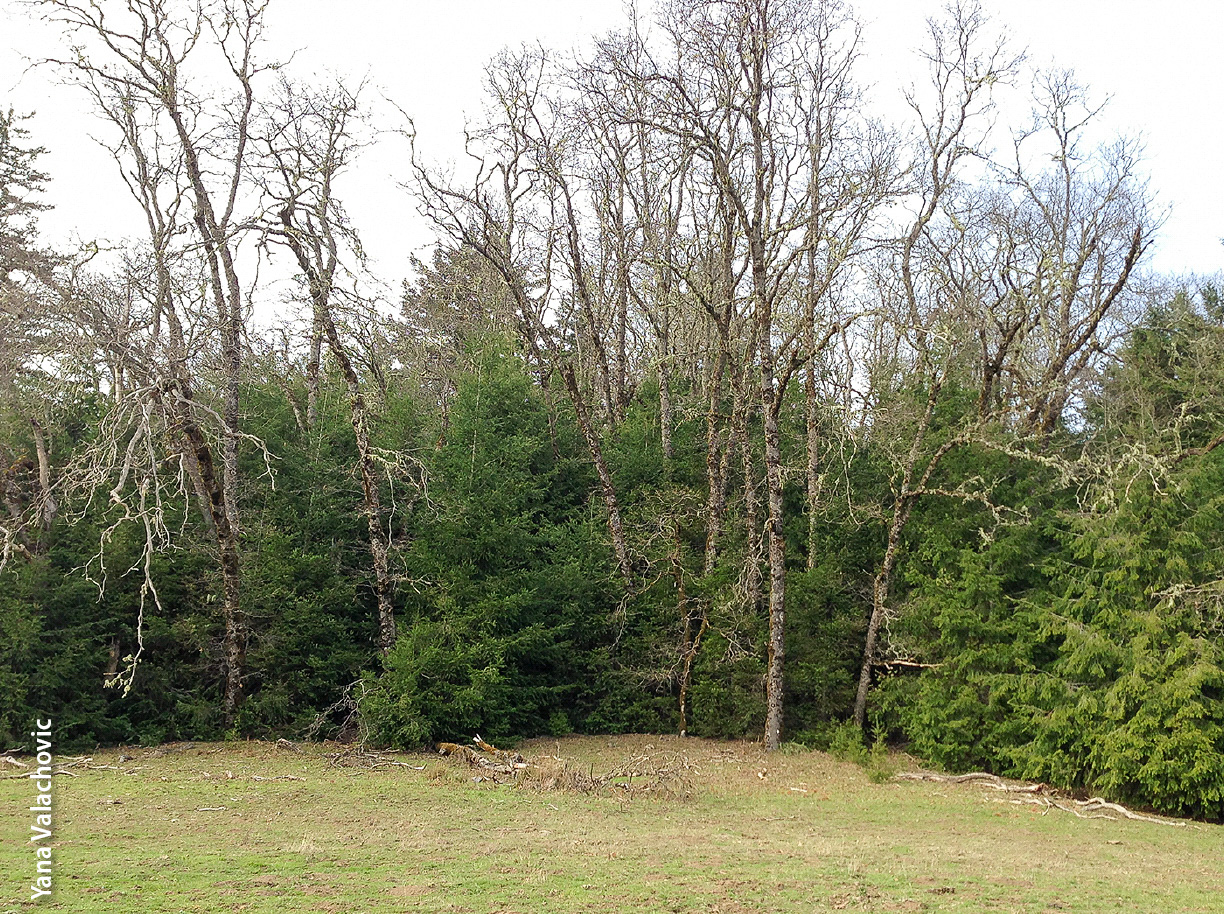All Issues
Research to policy: Enabling oak woodland restoration
Publication Information
California Agriculture 71(1):22-22. https://doi.org/10.3733/ca.2017a0003
Published online February 09, 2017
NALT Keywords
Summary
UC studies of conifer encroachment inform rule changes to help landowners.
Full text
California black oak and Oregon white oak woodlands throughout California have been shrinking due to decades of conifer encroachment, which has led to a loss of wildlife habitat, biodiversity and grazing land.
Many years of fire suppression have created conditions that enable conifers to invade oak woodlands. Slowing the process of encroachment is difficult, as trees need to be removed manually, which is expensive. Additionally, landowners have been hindered in removing confers from oak woodlands by California's Forest Practice Rules, which require that owners replant conifer trees after harvesting trees even when the goal is to promote oak restoration.
UC and UCCE research on the impact of conifer encroachment helped facilitate policy changes that make it easier for California landowners to remove conifers from oak woodlands.
A collection of policy changes adopted last year make it significantly easier for California landowners to manage this type of conifer encroachment. AB 1958, authored by Assemblymember Jim Wood (D-Healdsburg), removes permitting hurdles for removing small-diameter conifers from oak woodlands on a 7-year pilot-test basis starting January 1, 2018. Separately, the state Board of Forestry established a new timber-harvest rule for oak woodland restoration projects, effective January 2017, that allows landowners to remove conifers that have encroached on Oregon white and California black oak woodlands.
“AB 1958, developed with the expertise of UC Cooperative Extension, allows private land owners to manage their land and preserve these valuable oak habitats,” said Wood. “It's a great step forward in responsibly managing our environment.”
UC Cooperative Extension (UCCE) worked directly with the Board of Forestry, the California legislature and interested stakeholders to facilitate these changes. UCCE also helped establish the scientific basis for the new rules by documenting the degree and nature of the encroachment in a three-year study completed in 2016. Under a UC Agriculture and Natural Resources competitive grant, UCCE Humboldt County director and forest advisor Yana Valachovic led a broad team of researchers that included area fire advisor Lenya Quinn-Davidson, UC Berkeley–based specialists Rick Standiford and Maggi Kelly and professor Matthew Potts, along with private landowners and collaborators from Humboldt State University and government agencies.
“This is an exciting time for oaks and it has been great to help create science-based policy,” said Valachovic. “I am grateful for UC's support. This much-needed scientific assessment has helped to develop awareness of these important habitat types in need of restoration.”
The team evaluated the impact and extent of Douglas-fir encroachment in 10 oak sites across Humboldt and Mendocino counties, and documented the age structure and tree health of these oak stands. The team learned that most of the encroachment began after 1940 and that the oaks are much older than the Douglas-fir trees. The researchers also studied factors that influenced encroachment, such as climate and moisture, and mapped oak woodlands and compared them to historic photos. The data collected directly informed and gave confidence to the policymakers working on the rule changes.





